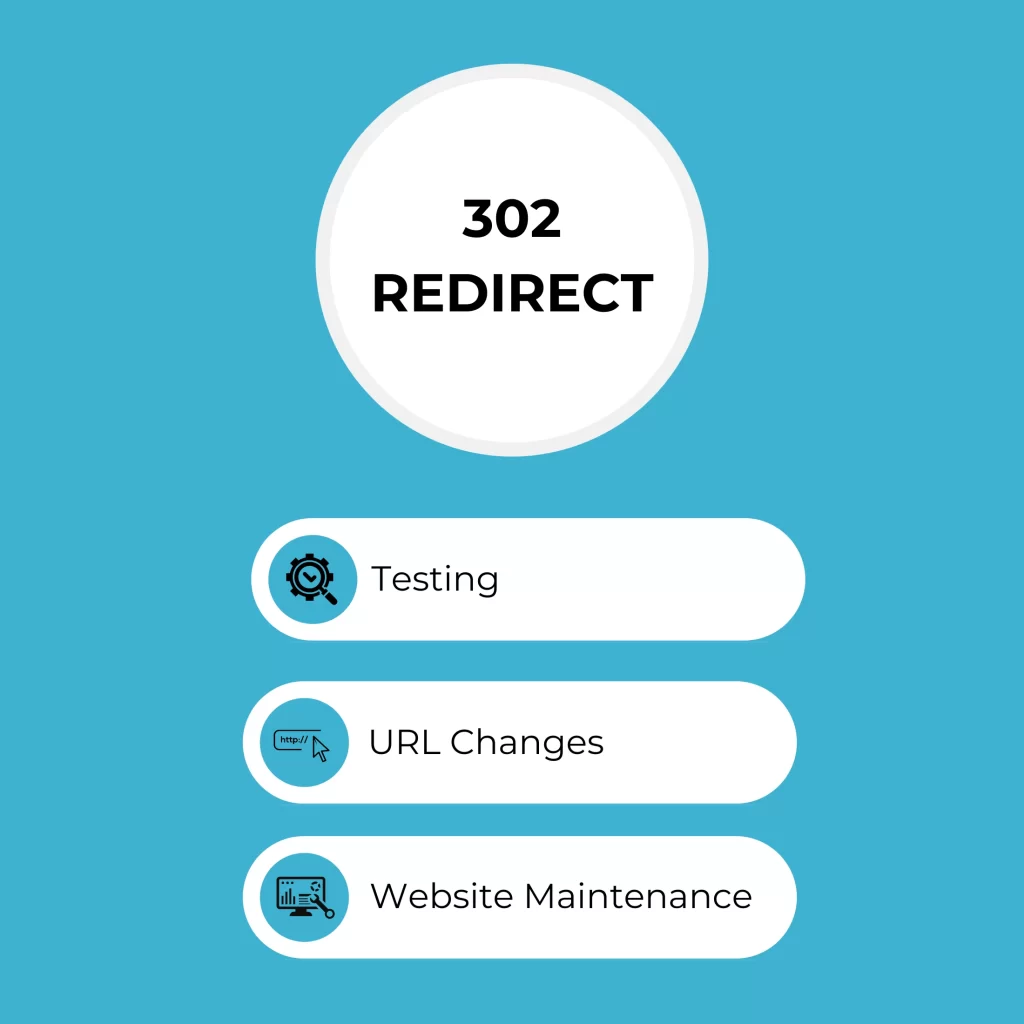Glossary > 302 Redirect
302 Redirect
A 302 redirect acts like a short pause in your favorite TV program—it momentarily reroutes site visitors (and internet search engines) from one link to another. Unlike a 301 redirect, which signals a long-term move, 302 states, “Hold on, we’ll be right back!” The original link sits tight, but it’s been on hold for a while.
What is a 302 Redirect?

Think of a 302 redirect as the quick clean-up you do before visitors get here. It briefly changes visitors from the shared link to a different one while maintaining the initial URL’s online search engine rankings intact. If you’re updating a page, a 302 redirect helps temporarily send visitors from www.example.com/temporary-page to www.example.com/maintenance-page. When the update is finished, you can remove the redirect, and everything will be back to normal. It’s a handy way to keep things running smoothly while you make changes!
Why Make Use of a 302 https code?
A 302 http code is your go-to when you need to temporarily move web traffic without shedding the search engine optimization juice of the initial URL! It is great for when you’re doing temporary website maintenance, running a limited-time promotion, or making quick changes. For example, if you’ve just launched a new discount page and want to direct visitors there without losing the search engine benefits of your original link, a 302 redirect is the perfect solution. It helps you make those changes smoothly without any long-term impact! It tells the online search engine, “This is simply a short-term pit stop, not a long-term action!”
Exactly how to Apply a http 302 status code?
If you can access your web server or CMS, establishing a 302 status code is simple. On an Apache web server, you can add a 302 redirect in your.htaccess file like this: Redirect 302 /old-page.html http://www.example.com/temp-page.html. If you’re using a CMS like WordPress, some plugins make this a breeze. Just remember to remove the redirect when you’re done with the temporary change—nobody wants unnecessary detours on their way!
Example
Let’s claim you have a summer season sale page at www.example.com/summer-sale. but wish to redirect site visitors to a particular offer page at www.example.com/special-offer momentarily. A Http 302 will smoothly assist site visitors and the internet search engine to the brand-new web page without impacting the initial page’s optimization value.
Video
Video clip Recap:
This video clip dives deep into what a 302 redirect is when to use it, and how it compares to a 301 redirect.
It’s loaded with sensible examples and pointers for grasping your 302 redirects.
Frequently Asked Questions
When should I use a 302 redirect instead of a 301?
Use a 302 redirect for short-lived modifications. A 301 is for permanent actions. How to Avoid Common Concerns with 302 Redirects
Can a 302 redirect affect my search engine optimization?
302 reroutes typically don’t bring as much search engine optimization weight as 301s because they are temporary.
For how long can a 302 redirect be used?
It’s best to utilize a 302 redirect only as long as needed. When the short-lived requirement is over, eliminate the redirect to avoid unneeded detours.
Related Articles